Avdiivka: Geospatial Vehicle Loss Assesment. Part 2
Mapping 211 Vehicles Lost Between October 10th and November 28th
We have re-uploaded the images as, during the final uploading process, we accidentally included some draft images with unedited coordinates, moving vehicles, or incorrect geolocation arrows. The overall count remains unchanged at 211
Frontelligence Insight team, upon a thorough examination of multiple satellite shots spanning from October 10th to November 28th, has identified over 211 destroyed or damaged and abandoned Russian vehicles in the vicinity of Avdiivka.
Our initial report included over 109 vehicles between October 10th and October 20th, excluding the area west of Vodyane. This time, we expanded our coverage to include the entire area until November 28th, 2023, bringing the total number to 211.
Losses that were identified previously in Part 1 or that occurred before October 10th—the beginning of the assault—are marked with white squares. Ukrainian losses are excluded from this report, as the focus of the report is on Russian losses, although we weren’t able to identify more than 7
This number surpasses Russian losses in any other single battle, including Vuhledar, marking it the most devastating battle for Russian forces in terms of vehicle losses. The primary categories of losses include tanks, BMPs, BTRs, MTLB, some IMVs, a couple of trucks, and MLRS.
Interestingly, not all video-confirmed FPV drone hits resulted in observable destroyed vehicles through satellite imagery. This could be explained by some vehicles remaining operational or being evacuated for repairs from the field. An FPV drone hit doesn't necessarily indicate a vehicle loss.
Examining the inability to evacuate immobilized yet visually undamaged vehicles often allows our team to determine control over a specific area. Frequently, many vehicles situated in the rear of the Russian side are promptly evacuated, sometimes on the same day.
The initial assault heavily relied on the overwhelming firepower advantage created on the flanks of Avdiivka, but it quickly lost its momentum — an essential element in such assaults. Despite initial successes, the forces were unable to translate them into a broader advancement, particularly in the envelopment of Avdiivka.
At least 50% of these losses occurred during the first three weeks of the launched offensive, with occasional peaks throughout October to December. This also aligns with various reports, including those from Frontelligence Insight, about a shift towards infantry assaults instead of massive mechanized troops.
Further analysis indicates that Russian forces were unable to achieve success in Berdychi despite having successes in Stepove. Our team predicted this earlier, as an overextension of logistical lines without a foothold would be extremely risky and vulnerable to counter-attacks.
We excluded several locations recorded on videos where Russian vehicles were destroyed due to the extensive explosions. However, on the imagery, there was nothing left to identify as a vehicle, other than a scorch mark and crater.
We also excluded multiple vehicles on the road that were not present in previous images, as it was unclear whether those were on the move or were static and disabled. Additionally, we didn't include a few operational vehicles.
To enhance accuracy, we compared imagery from September and October to exclude vehicles destroyed before October 10th and those included in the previous report. Errors and misidentifications might still exist, but they are estimated to be no more than 12.75%
The total number of losses would amount to approximately slightly over the complete annihilation of 5 battalions. This represents significant losses in both equipment and personnel, considering the achieved results.
The previously reported US government estimates, indicating that more than 13,000 Russian forces have been killed or wounded during the offensive along the Avdiivka-Novopavlivka axis, align with the observations depicted in our analysis.
Our teams utilized geolocated data to visually map Russian vehicle losses between October 10th and November 28th, aiding in visualizing the battle for Avdiivka and identifying locations with the highest concentration and number of vehicle losses.
The battle for Avdiivka continues, with Russian forces still attempting to establish a foothold and improve the tactical situation near AKHZ, as well as in the Industrial Zone—the southern area of Avdiivka.
After sustaining heavy losses, it remains unclear whether Russians will be capable of exploiting their success, even if Avdiivka will be eventually occupied by them. To enter operational space and advance further, they would require combat-ready troops consisting of multiple brigades.
If you found this analysis informative, please consider sharing it. Additionally, consider posting the link to this article directly on the X (former Twitter), as the platform significantly reduces the visibility of articles from Substack.
Links and additional sources:
1. Avdiivka: Russian Losses From October 10th to October 20th. Part 1
2. Declassified US Intelligence Reveals Massive Russian Losses in Ukraine
https://www.voanews.com/a/declassified-us-intelligence-reveals-massive-russian-losses-in-ukraine/7395271.html
3. Geoconfirmed
https://geoconfirmed.org/ukraine/b68bfe61-9300-49ae-e613-08dbe78ec568

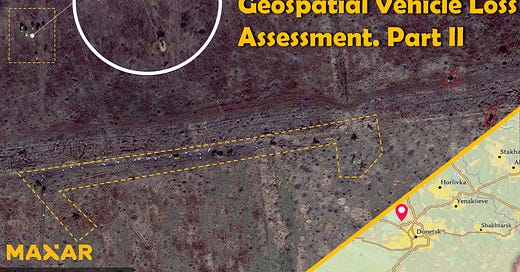




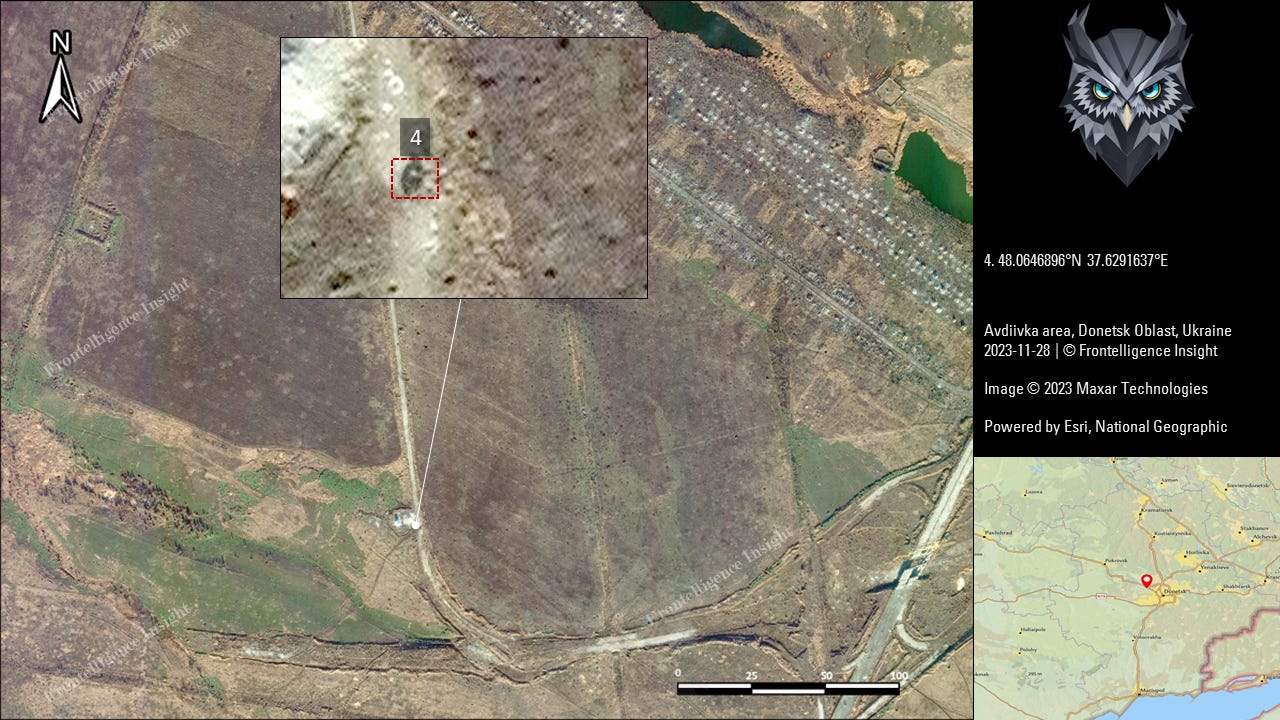


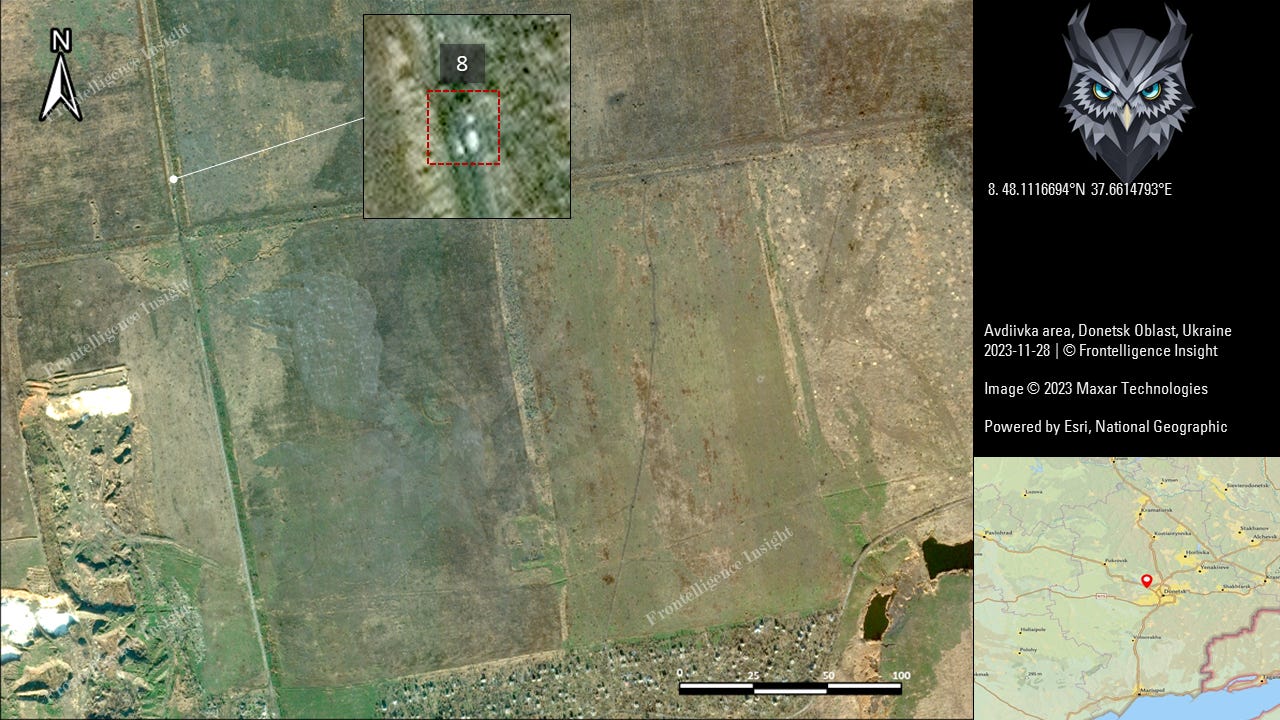











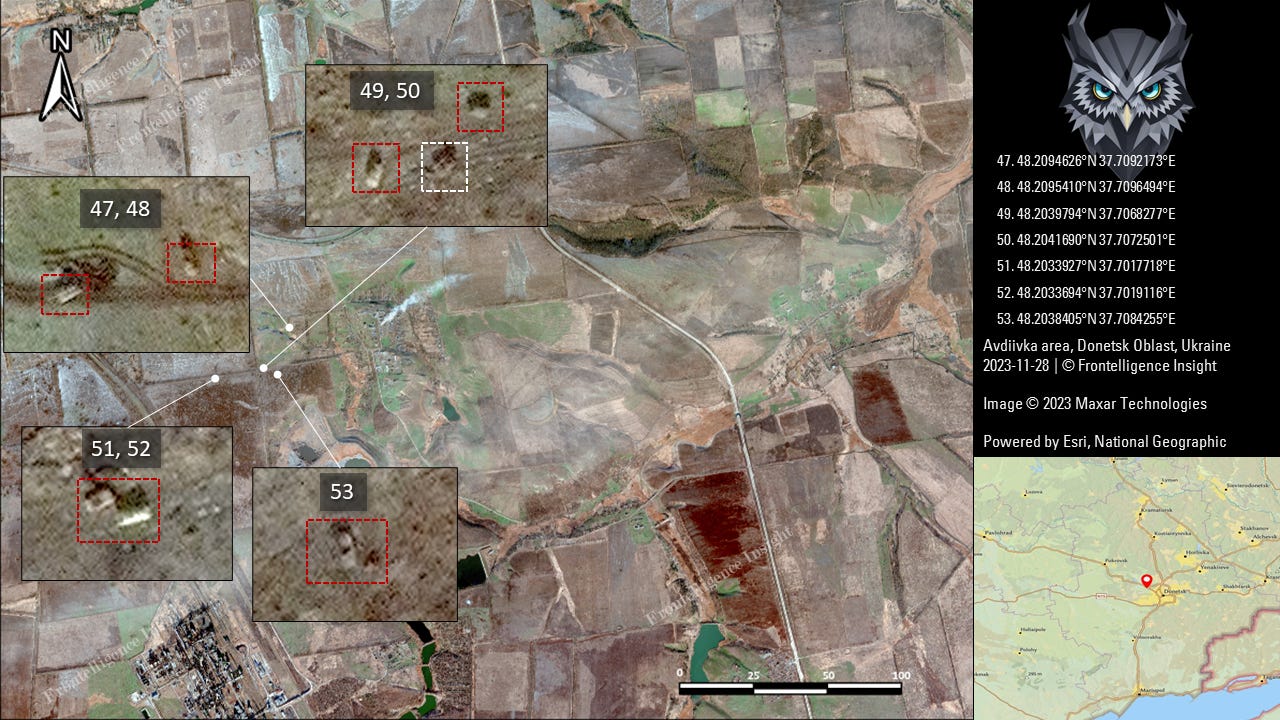



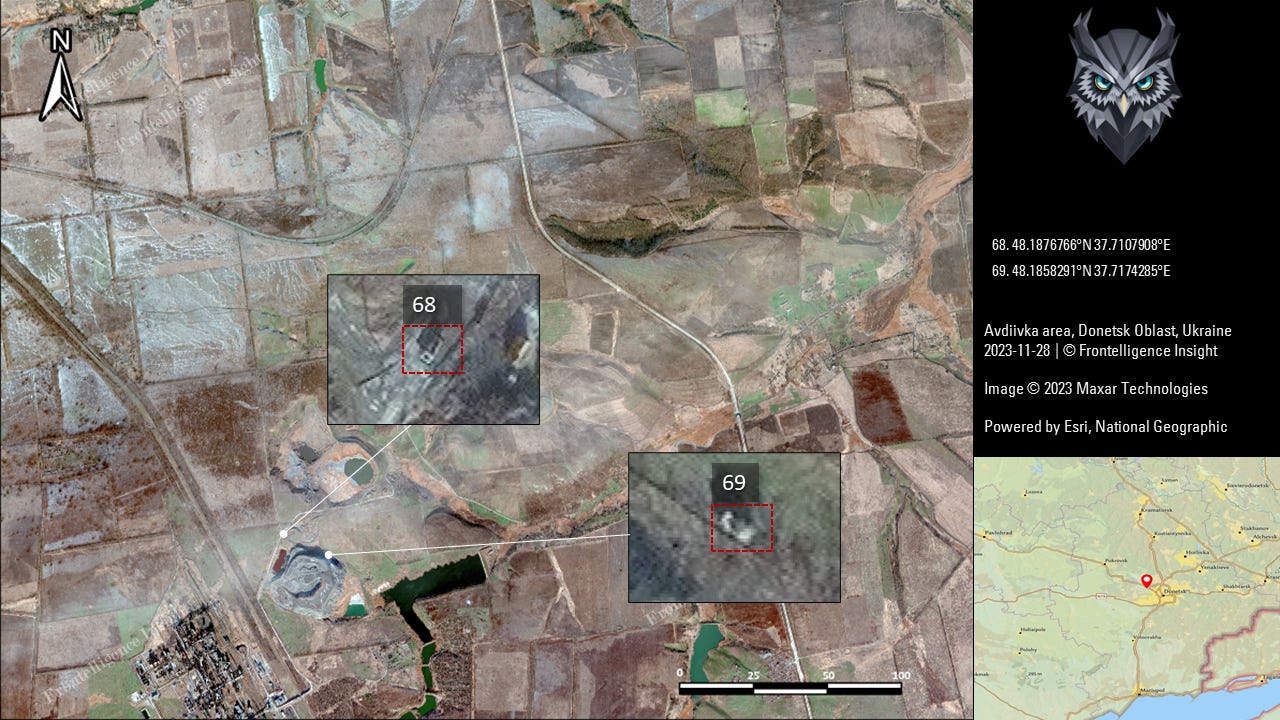
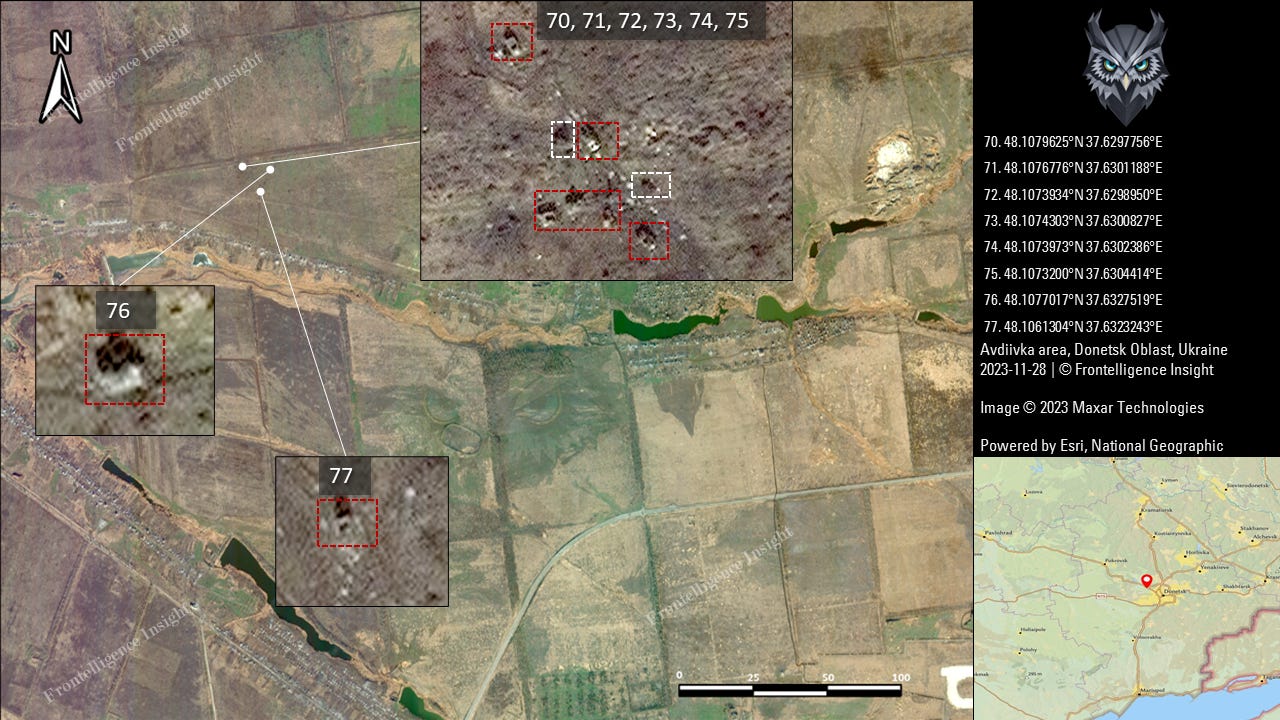








Excellent summary. Your analysis supports the view that Ukraine could prevail in a long war of attrition, provided US support remained firm.
I always appreciate your team's efforts. It looks like you counted Russian equipment as far as 5 km behind Russian lines, too. Looking at Andrew Perpetua's map, he listed about 20 more vehicles as destroyed as far as 20 km behind Russian lines, plus more damaged.